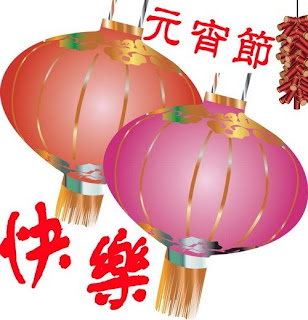Fifteenth day of the new year
The fifteenth day of the new year is celebrated as Yuánxiāo jié (元宵节), otherwise known as Chap Goh Mei in Fujian dialect. Rice dumplings Tangyuan (simplified Chinese: 汤圆; traditional Chinese: 湯圓; pinyin: tāngyuán), a sweet glutinous rice ball brewed in a soup, is eaten this day. Candles are lit outside houses as a way to guide wayward spirits home. This day is celebrated as the Lantern Festival, and families walk the street carrying lighted
lanterns.
This day often marks the end of the Chinese New Year festivities.
The first lunar month on the 15th, is China's traditional Lantern Festival. The first month for January, the ancients said that night as "night" and on the 15th is also the year the first full moon night, it said fifteenth dayis for the Lantern Festival. Also known as the "Spring Festival". According to Chinese folk traditions, in one Yuanfu before, the earth rejuvenate the festive night, the sky bright and shrinkage in the floor lantern 10,000 people, guess riddles and eating Lantern family reunion dinner.
Lantern Festival originated in the Han Dynasty. China's civil society have the Lantern Festival Lantern eating customs.


